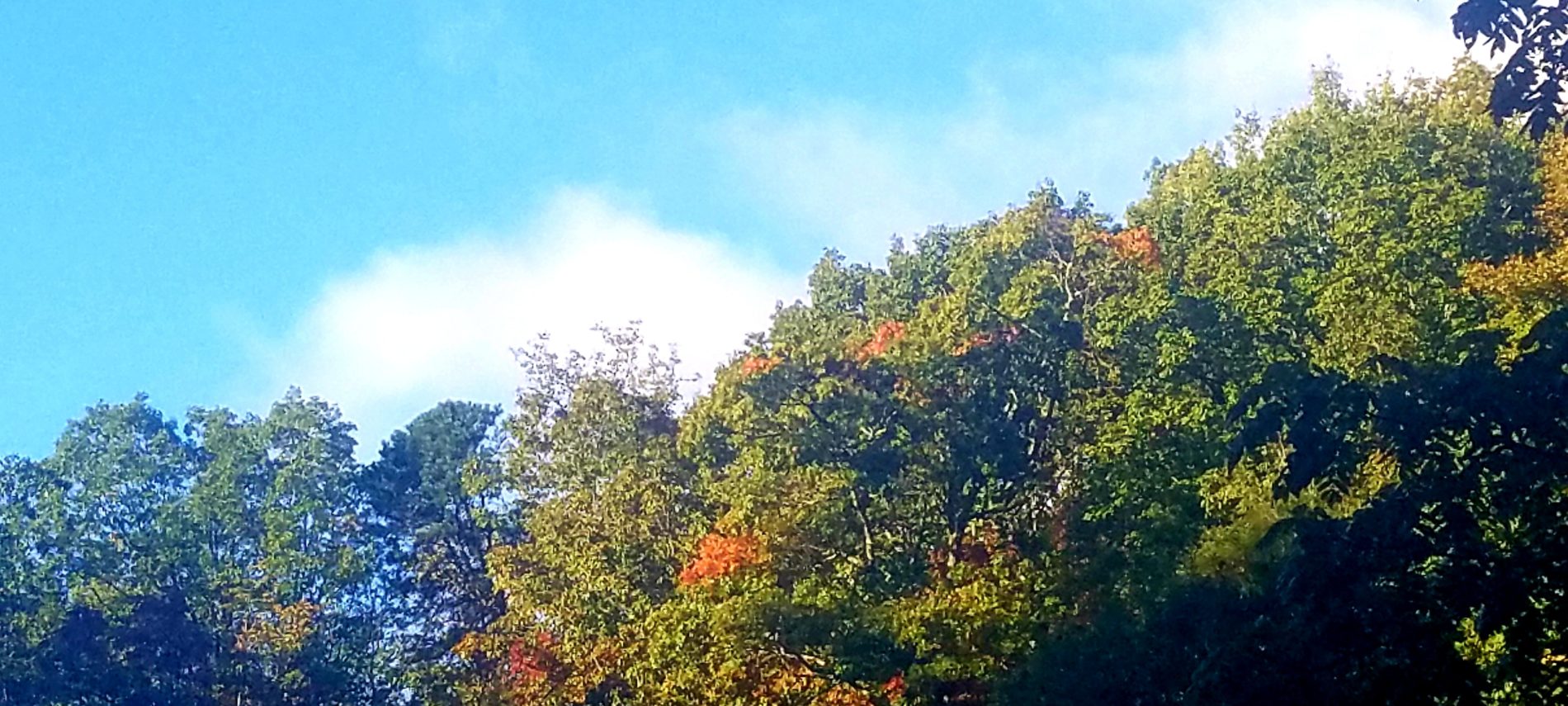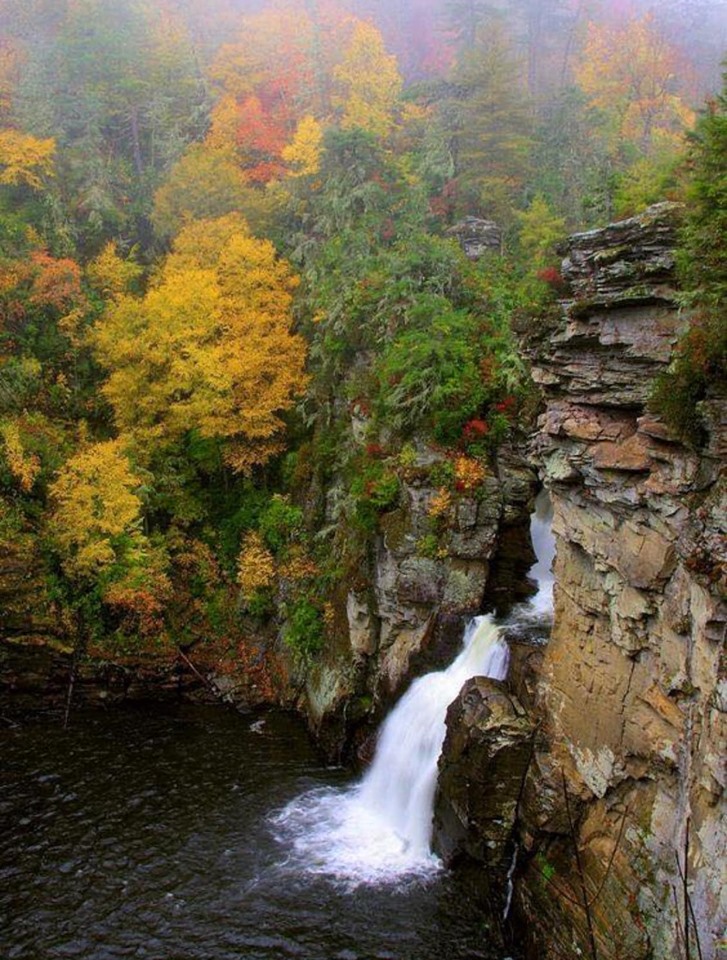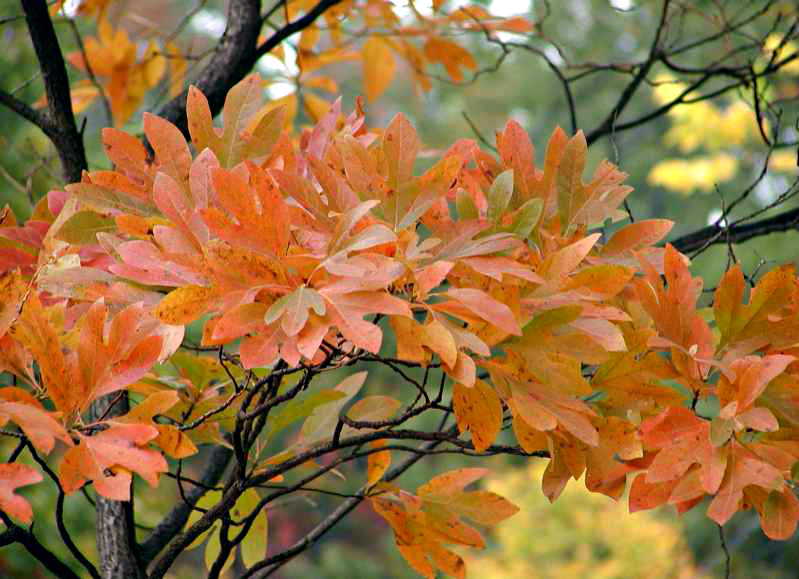When it comes to leaves on the trees, some early changers fall, some late changers stall… such is typically the case with mid-October in the North Carolina mountains. One difference this year is that the early changing leaves are about a week late. So let’s try to figure out what Mother Nature is thinking during Week 4 of the fall foliage season.
Once again, good news/not-so-good news. The not-so-good news is that we are still at least a week behind in our usual fall color show. By mid-October, our elevation (2,300 feet) is usually about 40% to peak fall color, with dogwoods and sourwoods in full color, birch trees on their way to peak, and sassafras and maples starting to show their stuff. But noooo… the maple trees are still green.
The good news, though, is that Mother Nature has started to get her act together at elevations above 4,000 feet, which will probably peak sometime the week of October 20.
Here’s where to look for fall color during Week 4 (the week of October 13):
- Mount Mitchell State Park – a later-than-usual fall season is bringing Mt. Mitchell into Week 4’s recommendation list, with views of color at lower elevations and great hiking opportunities while the daytime temperatures are still fairly warm (be prepared for 50-degree weather at Mt. Mitchell in October… or cooler!). For a nice walk through scented evergreen forest at the highest elevation east of the Mississippi, check out the Balsam Nature Trail at the summit of Mt. Mitchell. Plus, there is a sweet two-hour scenic loop drive to Mt. Mitchell State Park from the Inn on Mill Creek via Hwy 70, Hwy 80 and the Blue Ridge Parkway, for extra leaf peeping.
- Mount Pisgah – southwest of Asheville is Mt. Pisgah, which gives Pisgah National Forest its name. At an elevation over 5,700 feet, you’ll be hiking to some excellent mountain views atop Mt. Pisgah. If you don’t want to hike, the parking lot at the Pisgah Inn has some nice vantage points (and an excellent restaurant as well). Looking for even better views? Try the hike to Fryingpan Tower nearby.
- Linville Falls – located just one mile from the intersection of Hwy 221 and the Blue Ridge Parkway is Linville Falls, the highest volume waterfall in North Carolina. Lots of hiking options for Linville Falls, including a hike that takes you to different views of the falls, and a hike to the base of the falls. For an adventurous side-trip, check out Linville Caverns. Or Linville Falls Winery if wine tastings are more your style.
And now for this week’s installment of Seeing the Forest through the Trees, where we highlight a native tree in our neck of the woods, Pisgah National Forest. This week’s tree is the sassafras tree.
Sassafras trees can be different heights depending on how cold the winters are in the area where they grow (colder the winter, shorter the tree). The average is 30-60 feet tall. Sassafras have what we consider unique leaves, which are pretty cool and set it apart from most of the trees around here. The leaves actually come in three shapes — leaves with three lobes (called a “ghost”), leaves with two lobes (called a “mitten”) and un-lobed leaves (called a “football”). But what we absolutely l-o-v-e about the sassafras tree is its fall color, or should we say colors, because you can find sassafras tree leaves changing to red, yellow AND orange. It’s fabulous. We wish there were more sassafras trees around.
With cooler temperatures in the forecast, we suspect the fall color is going to really speed up, so check back next week to see what’s in store for Week 5!



